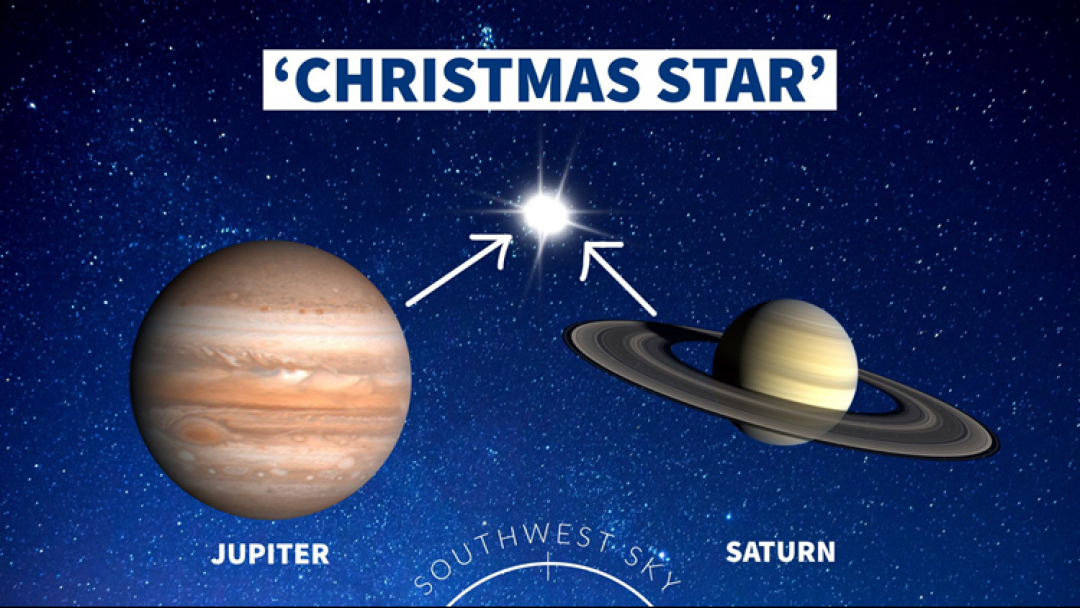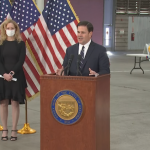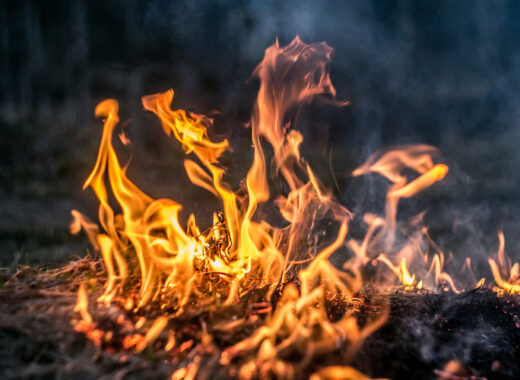On Dec. 21, the winter solstice, two planets will appear nearly aligned, resulting in an incredibly rare event. At one time, astronomers may have felt it so closely resembled a Christmas miracle — or, perhaps, the star of Bethlehem — that they named the spectacle the “Christmas Star.”
The event is called a conjunction, said Shane Larson, associate director of Northwestern’s Center for Interdisciplinary Exploration and Research in Astrophysics. “Conjunctions of Jupiter and Saturn happen every 20 years and most aren’t very close at all. What’s special this year is they’re right, right next to each other,” said Larson. “These two planets have never been this close in the sky for 400 years so no one really knows what it’s going to look like because it hasn’t happened since 1623, in Galileo’s time. That kind of gives you a sense of the rarity of the event. This is not just a once-in-a-lifetime event, this is a once-in-our-history since-we-built-the-telescope event.”
While catching a glimpse of either Jupiter or Saturn is relatively commonplace, Michelle Nichols, an astronomer at the Adler Planetarium, said the 1623 Christmas Star occurred so close to the sun, it’s possible it went largely unnoticed.
The last time the two gas giants were this close and easily seen? A cool 800 years.
“It’ll be closer than anybody on Earth has ever seen those two planets,” Nichols said.
She recently has been fielding questions at Adler about what the event will and won’t involve and said she’s encountered a great deal of misinformation. For one thing, she said, “nearly aligned” is not aligned.
“They’re coming close together, but they are not going to merge; they are not forming a single star. They will still appear as two distinct objects,” Nichols said. “The distance between them will appear as about one-fifth of the diameter of the full moon.”
And that’s just how close they’ll look. They’ll still be about half a billion miles apart.
“It’s a rare event that people should take advantage of to go take a look at, if they can,” said Adina Feinstein, a researcher in the University of Chicago’s astronomy and astrophysics department.
And timing is of the utmost importance, she said. The “star” will only be visible for about an hour shortly after sunset, which in Chicago should be at 4:23 p.m. that day. (The winter solstice is when the northern hemisphere has the fewest hours of daylight all year.)
“Remember it won’t be the whole night. People wishing to see it will want to look to the horizon, in the southwest sky, or use an app that tells them where Jupiter is,” Feinstein said.
But Larson doubts an app will be necessary. He said to look near where the sun has set and make a fist, lining up the bottom with the horizon. The top should be about where Jupiter will be, and it will be the brightest star in the sky.
Saturn will be much less so, but within about 45 minutes of sunset, Nichols said, the Christmas Star should appear. It will “set” about 6:40 p.m. in Chicago.
“You’ve got about an hour of decent viewing. Whether or not you see it past that time depends on your local horizon and how far down to the horizon you can see,” she said.
Some good news for Chicago residents: Light pollution from the city isn’t likely to affect visibility. But remember the star will be low — more out than up. If the horizon is obscured by buildings or trees, it won’t be visible.
Nichols said one question she has not been able to answer is whether it’s possible the star of Bethlehem described in the Bible might have been a conjunction. There was a Jupiter-Saturn conjunction in 7 B.C., she said.
“The answer is we have absolutely no idea,” Nichols said. “What people considered celestially significant then was very different from what people consider significant today, so it is extremely difficult to know what was being referred to.”
Larson encouraged everyone to get out and enjoy the night sky generally, and this event specifically. Although access to a backyard telescope isn’t necessary, it will magnify the experience.
“People have these kinds of moving experiences the first time they look at Jupiter and Saturn through a telescope because they will look just like they do in pictures. It’s really kind of remarkable in that way,” Larson said.
“Either way, go look. And just kind of appreciate the precise and very elegant clockwork of the universe that made this possible. For those of us who enjoy finding our place in the universe by staring into the sky, that is what this event is really most important for.”








